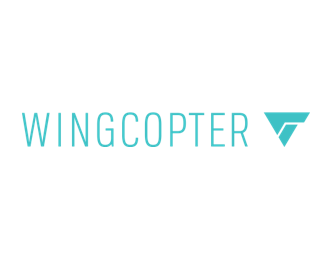123Fab #14
1 topic, 2 key figures, 3 startups to draw inspiration from

Will Covid-19 propel urban air mobility?
The 2020s are expected to be the decade of the Urban Air Mobility (UAM) revolution. Self-flying vehicles and drones hovering over cities have already been tested. A growing number of large transportation and aerospace companies – including Uber, Airbus and Hyundai – as well as venture-backed startups are racing to launch the first electric vertical take-off and landing aircraft (eVTOL). And there seems to be an emerging consensus that the electrification of aviation will be the next fundamental transportation disruption, including in urban areas. But will it actually disrupt urban mobility?
Air transport for passengers and goods will undeniably be part of the urban mobility landscape, especially in large urban areas and megacities where there is a need to reduce congestion, commute times and pollution. The first prototype flights for autonomous electric flying vehicles and drones are already underway, made possible by multiple breakthrough innovations:
- Electric propulsion is a major technology used to fly eVTOL with no aircraft noise and emissions during take-off and landing. Current aircraft prototypes are equipped with electric motors powering multiple rotor blades that generate lift.
- Most Urban Air Vehicles (UAV) are electric and battery-powered and improvements in battery and energy technologies, in particular lithium-ion batteries, have been crucial in the rise of electromobility, including air electromobility.
- Advances in hydrogen storage and fuel cells technologies, which are an alternative to battery technologies, are likely to make UAV more sustainable.
- AI technologies will facilitate traffic management systems, but mostly help make aircrafts autonomous.
- Finally, production techniques are quite similar to those of the electric automotive and aviation industries, with high quality standards and R&D to find the best technologies and materials. The materials used in the production of UAV have to be particularly lightweight and resistant, like carbon-fiber composites and superalloys.
However, these technologies are still under development. For instance, the use of electric batteries brings a new set of challenges, including uncertainty about the weight of the batteries and charging times and the imbalance of electric grids. Aircrafts’ electric rotors need a lot of energy to operate, which means that they have to be equipped with several high-energy batteries that are particularly heavy and need a couple of hours to charge.
A number of technological challenges remain, but also many regulatory and governance concerns regarding the use of flying vehicles in cities:
- Noise and turbulence in cities: rotating blades produce noise and wind nuisance during take-off and landing. Because of the noise generated, cities and populations can be against flying vehicles.
- Airspace management: the adoption of UAV will require airspace regulations to avoid accidents, infractions, drifts as well as visual pollution. Flying vehicles aim to be autonomous in the long term, but some aircrafts need pilots, which means that flying such a vehicle will require training and a flight licence.
- Safety is one of the biggest concerns for UAM. There are many aspects to consider, including the aircraft and weather conditions.
- Public acceptance is another challenge for UAM advocates: will people trust autonomous flying vehicles and are they willing to accept airspace congestion?
- Take-off and landing infrastructures are critical for success: it is not only about the vehicles themselves, but how they fit in a Smart City design.
- The business model for people transportation has to be demonstrated: should this type of mobility remain fully private or subsidized by the city? As the current prototypes can carry less than 10 people, can these small eVTOL shuttles be financially viable?
To conclude, there is still a lot of work to be done before the sky fills up with autonomous electric vehicles, especially in terms of autonomy and security. Most cases are currently focusing on autonomous delivery vehicles as a means of testing in a lower-risk environment, before launching a passenger flight. The market is still extremely young and production and exploitation costs are still very high. This type of transport will thus be intended for a social elite at first. The democratization of UAM is however not fully certain yet, as the other urban mobility means, including micro mobility, increasingly and smoothly integrate into the existing ground transportation networks. The price to be paid for each minute saved with urban mobility (still to be confirmed if there is a cumbersome take-off/landing process and if the infrastructure is insufficient) remains an unanswered question today.
2 Key Figures
110 Urban Air Mobility projects identified worldwide
almost half of which are in Europe
Market size expected to reach $15.2bn by 2030
According to Markets & Markets, the global urban air mobility market was valued at $5.3 billion in 2018 and is expected to reach $15.2 billion by 2030.
3 startups to draw inspiration from
This week, we identified three startups that we can draw inspiration from: Windcopter, NaviFly and H55.

Wingcopter
Wingcopter is a German startup creating eVTOL aircrafts dedicated to commercial and humanitarian applications.

NaviFly
Based in Ireland, NaviFly develops an air traffic control platform that organizes the drone airspace and enables their operations and logistics within urban areas.

H55
H55 is a swiss startup developing certified electric propulsion and battery solutions to make aviation clean, quiet, efficient and ultimately autonomous.
